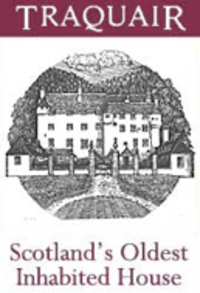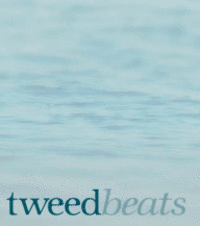


Local Sponsors
-
Traquair House
Traquair House, Innerleithen, Peeblesshire EH44 6PW
A romantic setting for weddings, hosting a wide range of summer events and a superb venue for corporate groups. You can even stay here in the luxurious B&B accommodation. Traquair House Brewery producing the world famous Traquair House Ales is also based here.
-
Tweedbeats
Kelso Roxburghshire
Tweedbeats.com a website dedicated to the promotion of one of the world's greatest angling rivers the Tweed.
More information
Many thanks to Traquair House for facilitating this camera's location and to Tweed Rivers Fisheries Association for capitally funding its installation. The etymology of the name Traquair can be traced back to the Celtic word "tret" or "tre," denoting a dwelling place or hamlet, and "quair," which refers to a stream characterized by a winding course. The Quair burn, joining the River Tweed a short distance from the rear of the house, contributes to this naming origin.The precise date of the house's initial construction remains unknown, but it can be inferred that a substantial structure already existed by 1107 when Alexander I of Scotland signed a royal charter at Traquair. During this period, the castle served as a hunting lodge for royalty and as a center for administering justice, enacting laws, and conducting courts. Numerous charters from that time still endure at Traquair, including one from 1175 that authorized William the Lion to establish a Bishop's Burgh with the right to hold a market on Thursdays. This small hamlet eventually grew into the City of Glasgow.Situated amidst the expansive Ettrick Forest, Traquair offered an excellent setting for royal hunting expeditions during this era. These regal hunting parties targeted various wildlife such as wild cats, wolves, deer, wild boars, and bears, which roamed the forest. A mural painting dating back to the early 1500s, preserved in the museum, depicts some of these early hunting scenes.The Wars of Independence, following the death of Alexander III in 1286, disrupted the peaceful existence of the Borders region, and Traquair became one of many fortified towers or peles constructed along the banks of the Tweed. When danger loomed, these towers would communicate with each other by lighting a beacon atop their structures, alerting neighboring areas to potential English invasions. Traquair was briefly occupied by English troops but was reclaimed by the Crown upon Robert the Bruce's ascension in 1306.In the 15th century, Traquair experienced a return to more tranquil times. When James III assumed the throne in 1460, he initially bestowed Traquair upon his favored courtier, Robert Lord Boyd. However, due to Boyd's lack of appreciation for the gift, the castle was subsequently given to James III's preferred court musician, William Rogers. Nevertheless, Rogers held Traquair for only nine years before selling it to the Earl of Buchan for a meager sum of 70 Scots merks (£3 15s).The Earl of Buchan, a half-uncle to the king, then passed Traquair to his second son, James Stewart, who became the first Laird of Traquair in 1491. Since that time, the house has remained within the same family.During this transitional period, Traquair evolved from a defensive tower house into a familial residence. In the 1500s, the lairds of Traquair assumed significant roles in public life, with John Stuart, the 4th Laird of Traquair, serving as the Captain of the Queen's bodyguard to Mary Queen of Scots. In 1566, Traquair hosted the Queen, her husband, and their infant son James. Notably, the house still exhibits the cradle where the Queen rocked her baby, as well as her bed and other personal effects.During the sixteenth century, the main building underwent extensions, completing the primary structure by 1599. In the early 1600s, the seventh Laird added an additional storey, realigned windows, and redirected the course of the River Tweed, distancing it further from the house.The seventh Laird emerged as the most influential member of the family. He held the position of Lord High Treasurer of Scotland and was granted an earldom in 1628. Three years later, he assumed the role of Commissioner of Scotland. Unfortunately, his loyalty to the king and his efforts to introduce Episcopacy to Scotland led to his downfall. He was dismissed from his post, faced substantial fines, and was rumored to have been seen begging in the streets of Edinburgh towards the end of his life.The Catholic tradition, which persists within the house to this day, was established by John, the second Earl of Traquair. His second wife, Lady Anne Seton, a devout Catholic, defied the perils of the era and insisted on raising their five children as Catholics. Secret Masses were conducted in a secluded chamber on the top floor. A hidden escape route for the priest was concealed behind a discreet cupboard, leading down the old stairs. This covert arrangement remained in use until the Catholic Emancipation Act of 1828.The construction of Traquair reached completion in 1695 under the direction of James Smith, an architect from Edinburgh. Smith added two side wings, erected a wrought iron screen in the courtyard, and created a double terrace at the rear of the house, adorned with two ogee roofed pavilions overlooking the formal gardens.For over three centuries, no additions or alterations have been made tothe main structure of Traquair House. The house has remained remarkably well-preserved, providing a glimpse into its rich history and architectural evolution.Today, Traquair House stands as one of the most well-known and historic houses in Scotland. It is renowned for its Jacobite connections, its extensive collection of artwork, manuscripts, and historical artifacts, and its beautiful gardens and grounds. The house is open to the public, allowing visitors to explore its various rooms, including the grand entrance hall, the drawing room, the library, and the bedchambers.Traquair House continues to be owned and lived in by the descendants of the Stuart family, making it one of the few remaining privately-owned houses in Scotland with such a long and continuous family history. Its unique blend of history, architecture, and natural beauty makes it a popular destination for tourists, history enthusiasts, and those seeking to experience the charm of a bygone era. Tweed is very water dependant and if early autumn enjoys heavy rainfall, September will encourage some summer salmon and sea trout into it. Mid to late October will see good numbers of fresh and coloured fish begin to appear through the beats, but to experience the best fishing, November is the month to go.



